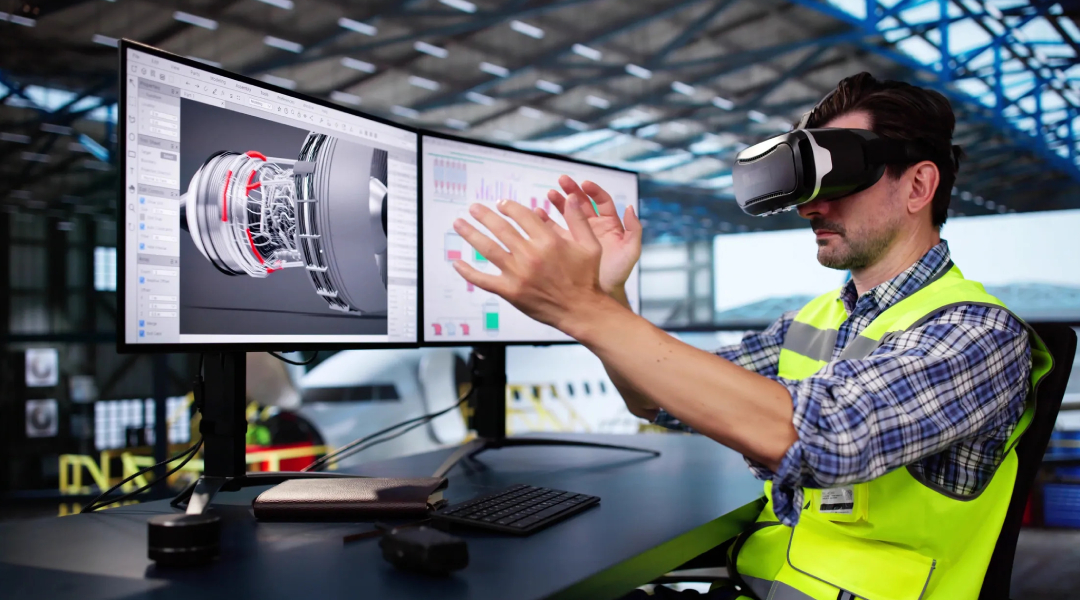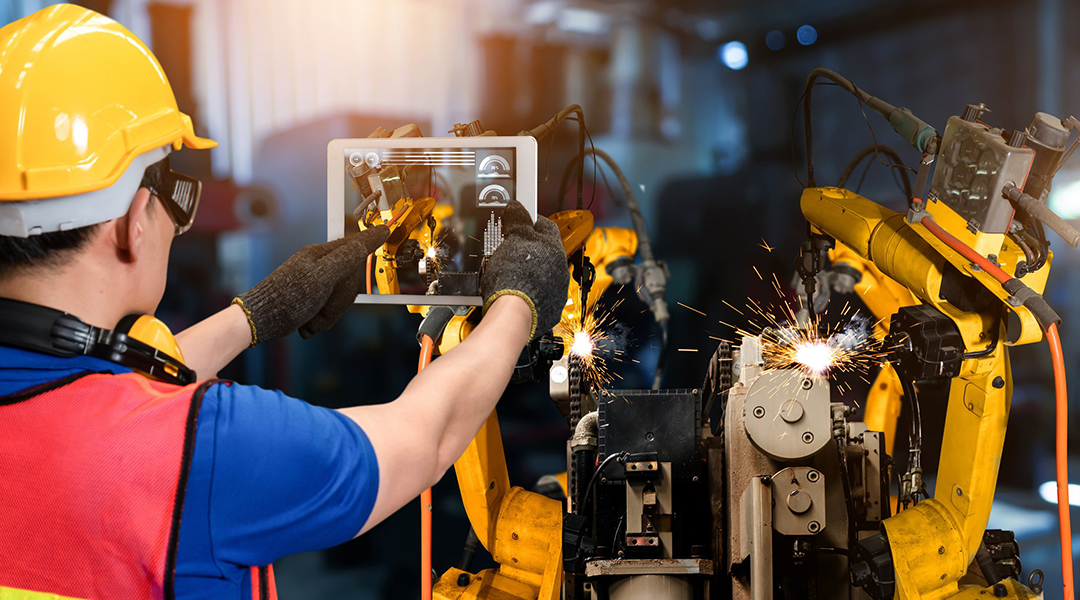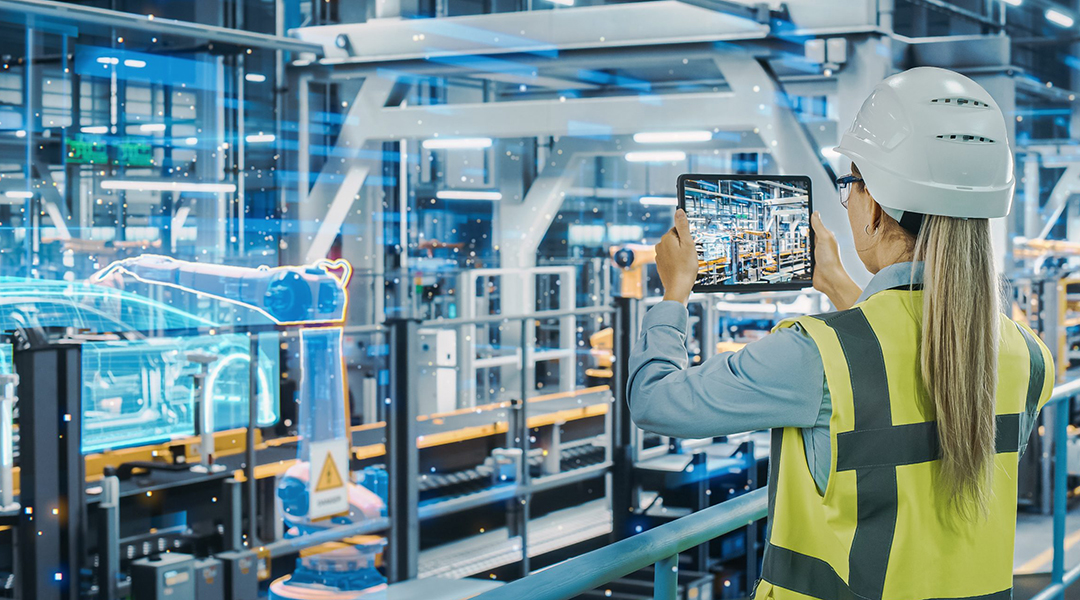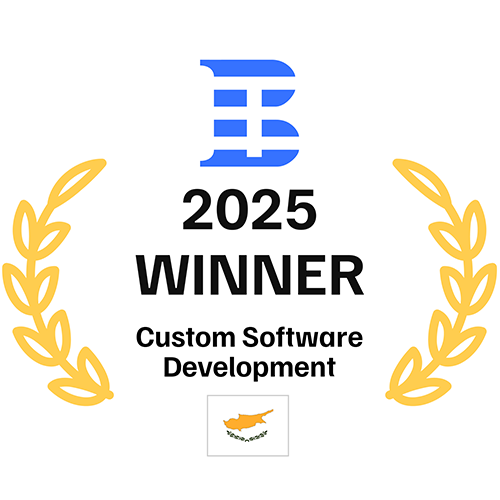Can the advent of virtual reality (VR) revolutionize not just the way we produce, but also how we sell? This question bugs the minds of the top manufacturers all over the world. Virtual reality, once a concept confined to science fiction and gaming, has now burst onto the scene as a potent tool in the world of manufacturing.
In this article, Program-Ace, a virtual reality app development company, delves into the burgeoning relationship between VR and manufacturing sales. We unravel the potential of VR in transforming manufacturing processes and examine its direct impact on sales performance. Join us on this journey through virtual landscapes to discover if VR is the missing piece in manufacturing sales success.
VR in Manufacturing: Key Market Insights
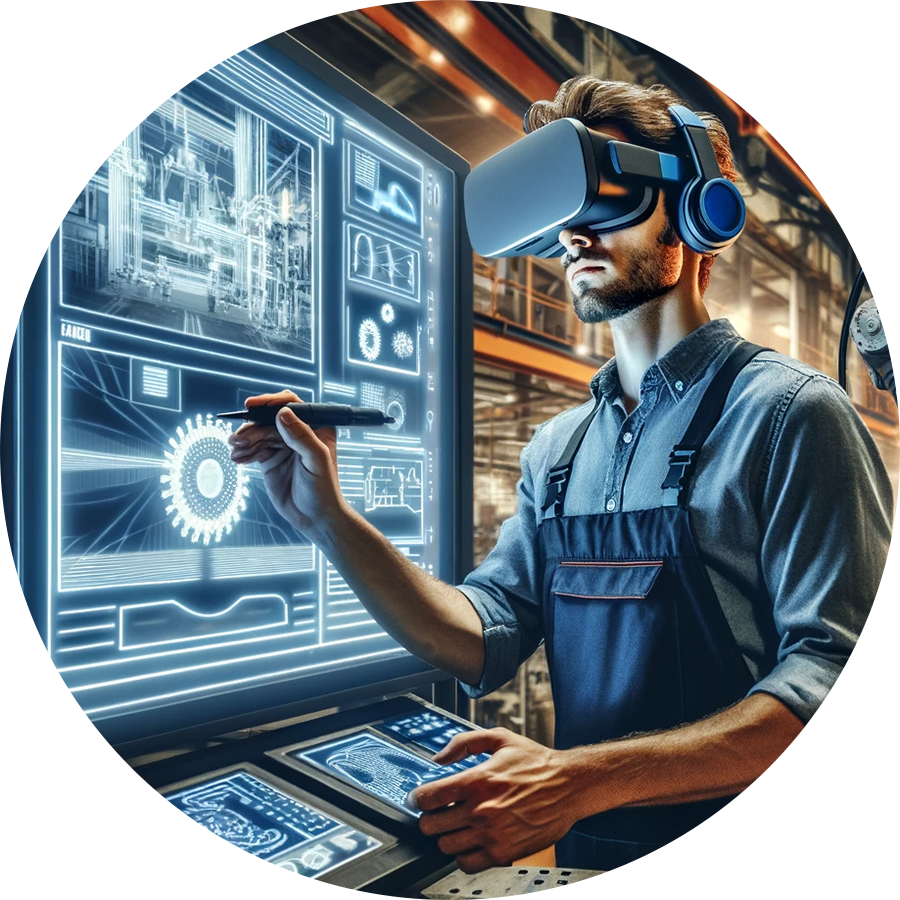
The integration of virtual reality in manufacturing is not just a passing trend; it's a rapidly growing sector with significant market potential. Recent statistics underscore the burgeoning interest and investment in this technology within the manufacturing industry.
A striking indicator of VR's expanding role in manufacturing is its market valuation and growth trajectory. In 2018, the global virtual reality market in the manufacturing industry was valued at USD 924.7 million. However, it's not just the size of the market that's noteworthy, but its growth rate. Projections suggest a skyrocketing increase to USD 14,887.0 million by 2026. This represents a staggering compound annual growth rate (CAGR) of 39.2% during the forecast period. Such explosive growth is a testament to both the technological advancements in VR and the growing recognition of its value in manufacturing processes.
The trend towards adopting VR in manufacturing is not limited to a few early adopters or tech-centric enterprises. A survey of US manufacturers reveals a significant shift towards embracing this technology. More than one-third of the manufacturers either already utilize VR technology or plan to incorporate it into their operations within the next three years.
Benefits Of Virtual Reality In Manufacturing
VR brings a plethora of benefits to manufacturers, each contributing to enhanced efficiency, safety, and competitiveness. Here are five key benefits and their practical value:
Improved Product Design and Development
VR allows for the creation of detailed 3D models, enabling designers to visualize, interact with, and modify products in a virtual environment. This capability significantly accelerates the design process, reduces the need for physical prototypes, and allows for rapid iteration, leading to a more efficient development cycle and cost savings.
Enhanced Training and Skill Development
With VR, employees can be trained in a realistic, yet controlled and safe virtual environment. This immersive training is particularly beneficial for high-risk tasks, reducing the likelihood of accidents during training. Additionally, VR training can be easily updated and customized, leading to better skill development and adaptability in a changing manufacturing landscape.
Streamlined Collaboration and Communication
VR facilitates real-time collaboration among teams, regardless of their physical locations. Designers, engineers, and other stakeholders can jointly interact with virtual models, leading to improved communication, quicker decision-making, and a more cohesive development process. This feature is invaluable, especially in complex projects involving multiple teams.
Cost Reduction and Risk Mitigation
The use of virtual reality in the manufacturing industry can lead to significant cost savings. By reducing the reliance on physical prototypes and streamlining the design process, companies can cut down on material and labor costs. Moreover, VR helps in identifying and mitigating risks in the manufacturing process by allowing for thorough testing and analysis in a virtual environment before any real-world implementation.
Examples of the Use of VR in Manufacturing Industry
The application of virtual reality has led to transformative changes in various manufacturing niches. We gathered some real-world examples from notable companies:
Automotive Design and Assembly: Ford Motor Company
Ford Motor Company has been a pioneer in using VR for vehicle design and assembly processes. Their VR lab enables designers and engineers to work in a virtual environment to design cars, trucks, and SUVs. This technology helps them to explore different design variations, assess ergonomics, and simulate assembly line workflows, significantly reducing development time and costs.
Aerospace Industry: Boeing
Boeing employs VR to design and test complex aircraft systems. Their use of VR allows engineers to immerse themselves in a 1:1 scale model of their aircraft. This enables them to inspect the design from the inside out, assess the integration of components, and simulate maintenance procedures, ensuring that all parts of the aircraft are accessible and efficiently designed.
Heavy Machinery: Caterpillar
Caterpillar Inc. uses VR for both product development and operator training. By creating virtual models of their heavy machinery, they can test and refine designs before moving to production. Additionally, VR simulators are used for training operators, allowing them to gain experience in a safe and controlled virtual environment, which translates to better safety and efficiency in real-world operations.
Consumer Electronics: Siemens
Siemens, a leader in electronics and industrial manufacturing, integrates VR into their product development and factory planning. VR assists them in visualizing new products and in simulating manufacturing processes, helping to identify potential issues early in the design process. This use of virtual reality in electronic manufacturing contributes to more efficient product development cycles and reduced manufacturing costs.
Pharmaceuticals: Pfizer
Pfizer has incorporated VR into its manufacturing practices, particularly in the design and configuration of its manufacturing facilities. By using VR, they can virtually walk through a plant, visualize the setup of equipment, and optimize the layout for maximum efficiency and compliance with health and safety standards. This practice leads to better-planned and safer manufacturing environments.
The Sales Connection: Leveraging VR to Promote Your Products
Virtual reality is not just a tool for design and production in manufacturing; it's also a powerful sales and marketing asset. By creating immersive and interactive experiences, manufacturers can leverage VR to enhance their sales strategies.
Immersive Product Demonstrations
VR enables potential customers to experience products in a completely immersive way. For instance, in industries like automotive or heavy machinery, where physical product demonstrations might be challenging, VR allows customers to explore products in a virtual space. This immersive experience can lead to a deeper understanding and appreciation of the product, thus increasing the likelihood of a sale.
Customization and Personalization
With VR, manufacturers can offer customers a chance to customize products to their preferences in a virtual environment. This personalized experience not only engages customers more deeply but also gives them a sense of ownership and satisfaction, which can positively influence purchasing decisions.
Virtual Tours of Manufacturing Facilities
VR can be used to give virtual tours of manufacturing facilities, showcasing the technology and processes behind the products. This transparency builds trust and can positively influence customer perceptions, leading to increased brand loyalty and sales.
Tips to Maximize Sales Effectiveness with VR
- Gather Customer Feedback for Continuous Improvement. Use the insights gathered from VR experiences to understand customer preferences and behaviors. Feedback on virtual product tours and customization options can be invaluable in refining product designs, and marketing strategies, and improving the overall customer experience.
- Leverage VR for Remote Sales and Global Reach. Utilize VR to overcome geographical barriers. By offering virtual product demonstrations and tours online, you can reach a wider audience, making your products accessible to international customers who might not be able to physically visit your showroom or manufacturing site.
- Incorporate Storytelling Elements. Use VR to tell the story of your product or brand. By creating a narrative around how a product is made, its unique features, and its benefits, you can connect with customers on an emotional level, making your product more memorable and desirable.
- Train Your Sales Team on VR. Ensure that your sales team is well-trained in using VR technology and can effectively guide customers through the VR experience. They should be able to answer questions and highlight key product features within the VR environment.
The Essential Technologies Behind VR in Manufacturing
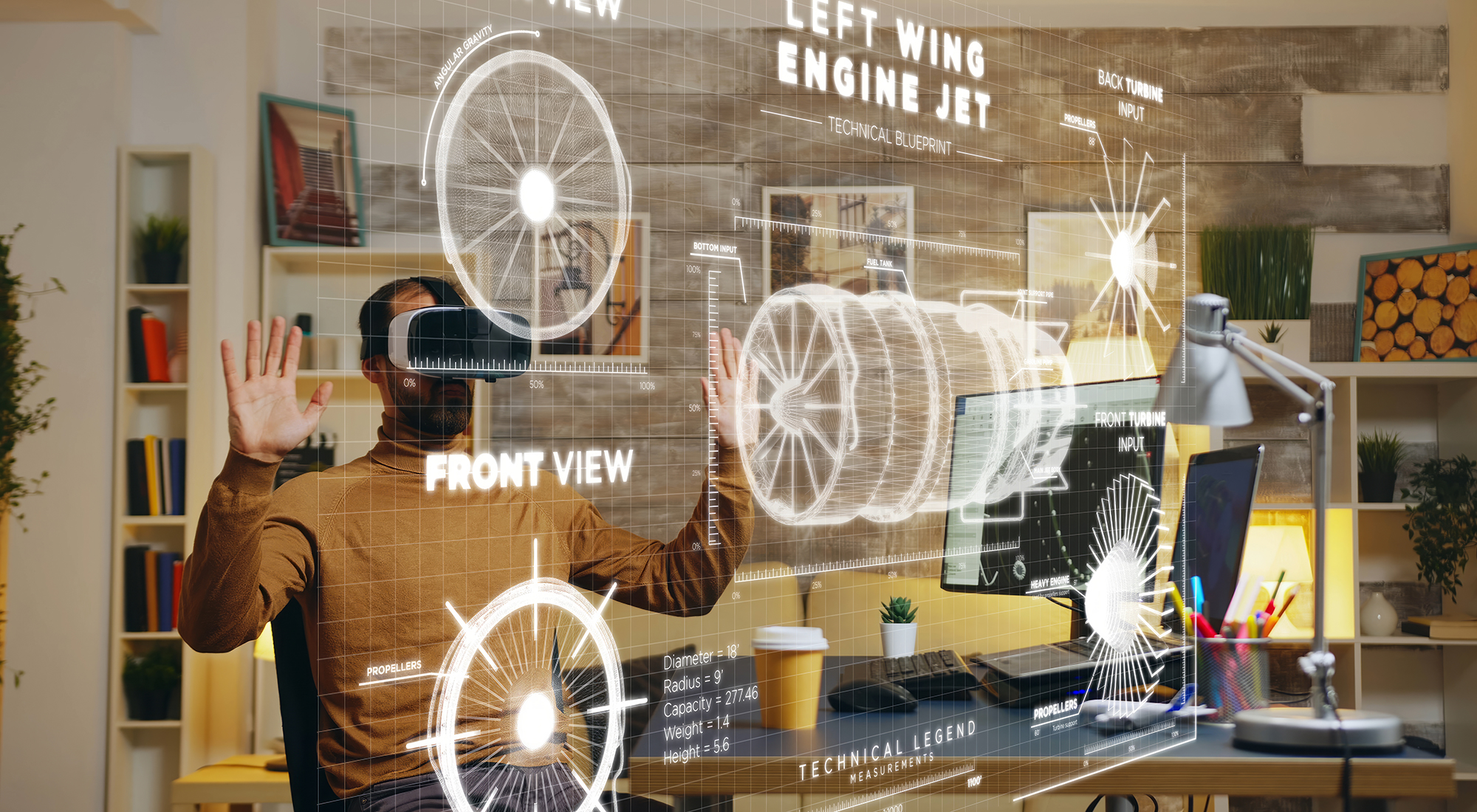
Using virtual reality in manufacturing requires a robust and specialized technology stack. Let’s review its crucial components.
Hardware Components
VR Headsets and Display Devices
The most visible element of VR technology is the VR headset. Devices like the Oculus Rift, HTC Vive, and PlayStation VR are popular choices, offering high-quality visual and audio experiences. These headsets provide the immersive environment necessary for VR applications in manufacturing.
Motion Tracking Systems
To allow users to interact naturally with the virtual environment, motion tracking systems are essential. These systems track the movement of the user's head, hands, and sometimes the entire body, translating these movements into the virtual space for a more realistic experience.
High-Performance Computers or Consoles
VR applications, especially those used in manufacturing, require high computational power. High-performance computers or gaming consoles with powerful processors and graphics cards are used to run complex VR software without lag, ensuring a smooth and responsive experience.
Software Components
VR Development Platforms
Platforms like Unity or Unreal Engine are commonly used for developing VR applications. These development environments provide the tools and libraries necessary to create detailed and interactive 3D virtual worlds.
Simulation and Modeling Software
For realistic and practical applications in manufacturing, specialized simulation and modeling software are used. These programs allow manufacturers to create accurate 3D models of products, assembly lines, or entire factories, which can then be explored and interacted with in VR.
Collaboration and Communication Tools
To enhance teamwork and communication in a virtual space, VR applications often integrate collaboration tools. These can include features like multi-user environments, voice communication, and the ability to share and annotate within the VR space.
Analytics and Feedback Systems
Incorporating analytics tools within VR applications allows manufacturers to gather data on how users interact with the VR environment. This data can be invaluable for understanding user behavior, improving training programs, and refining product designs.
Integration and Support Technologies
1. Cloud Computing and StorageCloud computing plays a vital role in storing and managing the large amounts of data generated by VR applications, as well as in hosting VR environments for remote access.
2. Network InfrastructureA robust network infrastructure is essential to support the data transfer requirements of VR applications, especially in scenarios where multiple users are interacting in a shared virtual space.
3. Security MeasuresGiven the sensitive nature of manufacturing data, security measures are crucial. Implementing encryption, secure data transmission, and access controls ensures that VR applications are not only effective but also secure.
Future Of Virtual Reality In Manufacturing
As VR continues to evolve, its applications in manufacturing are set to become more innovative and integral. The future of VR in this sector is shaped by several emerging trends that promise to redefine how manufacturing processes are conducted. Here are some key trends that are likely to shape the future of VR in manufacturing:
VR technology is expected to advance beyond individual training to more collaborative and interactive sessions. This involves multiple participants engaging in the same VR environment, regardless of their physical location. Such collaborative VR training can simulate real-world scenarios more effectively, fostering teamwork and improving skills in a more dynamic and interactive setting.
As VR technology becomes more affordable and user-friendly, its accessibility is anticipated to increase significantly. This will allow more manufacturers, including small and medium-sized enterprises, to leverage VR for various purposes, from design and prototyping to training and sales. Increased accessibility will democratize the use of VR, leading to broader innovation and application in the manufacturing industry.
The integration of VR with automated systems is poised to enhance quality control processes in manufacturing. VR can be used to create virtual replicas of manufacturing environments where automated systems can be tested and monitored. This will allow for more precise control over quality, reducing errors and increasing efficiency in production lines.
VR is set to play a crucial role in maintenance and repair operations. By using VR, technicians can access real-time data and visual guides when working on machinery, leading to quicker and more effective repairs. This application of VR will be particularly valuable in complex or hazardous environments, reducing risks and downtime.
The integration of VR with 5G networks and the Internet of Things (IoT) will enable more seamless and robust VR experiences in manufacturing. The high-speed, low-latency communication offered by 5G will enhance the responsiveness and interactivity of VR applications. Meanwhile, IoT's data-gathering capabilities will enrich VR environments with real-time data, making simulations and training more accurate and relevant.

Leverage Experience VR Team to Grow Your Manufacturing Business
VR looks promising for manufacturing companies, but the key to success with VR adoption lies in effective integration. Program-Ace, an experienced software development company, has been working with VR systems for years, and now our team knows all the ins and outs of virtual reality solutions.
If you want to test VR capabilities within your shop floors, Program-Ace is the best choice for tech backup. Contact us and share your inquiry, and we will shortly get back to you.



